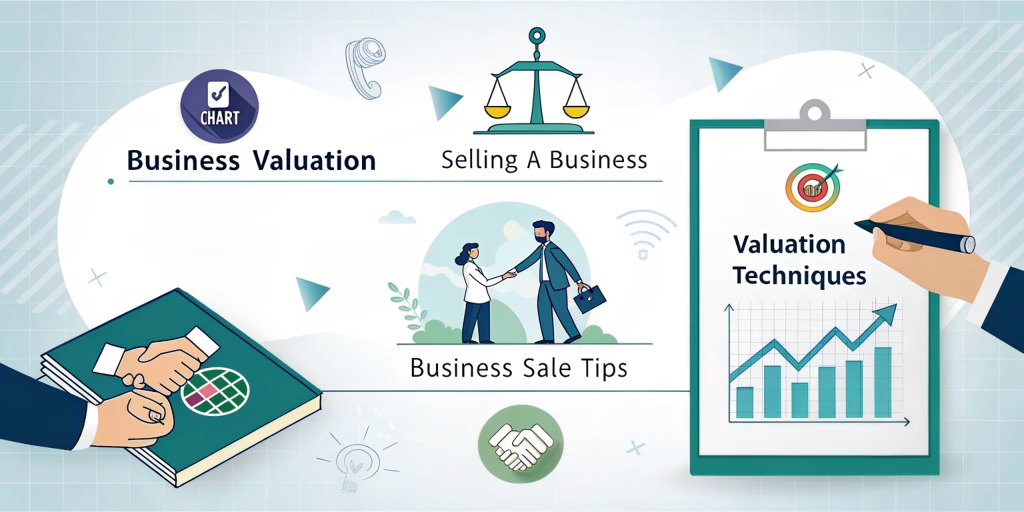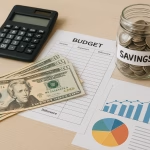Selling your business can feel big. You want a fair price. Too low, and you lose money. Too high, and buyers walk away. This guide shows simple steps you can follow. You will find your true value and get ready fast. We use clear words, short sentences, and a friendly tone. Let’s dive in.
Why Price Matters
A good price helps you sell fast. It brings serious buyers. It makes the sale smooth. Data shows fair prices sell about 30% faster. A fair price builds trust with buyers. Trust speeds up talks and closes deals.
Think of selling a car. You check prices online. You see what similar cars sold for. Then you pick a price that is fair and attracts buyers. Selling a business works the same way. You look at sales of other companies like yours. Then you pick a price that is right.
Main Ways to Find Value
No single way fits every business. Pick one that matches yours. Here are three top methods. You can use one or blend them.
1. Seller’s Discretionary Earnings (SDE)
SDE shows what the owner really earns plus profits. Buyers like this. It shows true earning power.
How to find SDE
- Start with net income (profit after expenses).
- Add back the owner’s salary.
- Add perks like health insurance or car allowances.
- Add one-time costs such as legal fees or travel expenses.
The total shows what a new owner could earn. Most small businesses use SDE. It is simple to calculate and clear to explain.
2. Asset-Based Method
This looks at all business assets. It suits shops with gear, property, or stock.
How to use this method
- List all assets with their current market values.
- Subtract all debts and liabilities.
- The result is the net asset value.
This works well for factories, restaurants, and retail shops. It gives a value based on what you own.
3. Market Comparison
This method uses real sale data. It is like checking house prices.
Steps to follow
- Find data on recent sales of similar businesses.
- Compare size, profits, and industry.
- Adjust for key differences like growth rate.
- Multiply your earnings by the average sale multiple.
You need good data on peers. It gives a quick benchmark for pricing.
Blended Method
You can blend methods. Mix SDE with asset value or market data. A blend offers a rounded view. It can help when one method alone does not fit.
Factors That Change Value
Many factors raise or lower your price. Keep these five in mind.
1. Financial Performance
Buyers look at revenue trends and profit margins. A steady upward trend looks strong. A sudden dip rings alarms. Show clear, rising profits for the past three years.
2. Industry Trends
A hot industry can boost value. A new tech shift can alter demand fast. Stay updated on market news. Show buyers how your field is growing or stable.
3. Intangible Assets
Intangible assets do not appear on balance sheets but add real value. They include:
- Brand name and goodwill
- Customer loyalty and repeat business
- Special know-how or proprietary processes
- Online reviews and social media presence
These assets can lift your price if well documented.
4. Goodwill
Goodwill is the extra value buyers pay for special things. Examples include:
- Top-notch staff who stay on
- Long-term vendor relationships
- Positive community reputation
Value these assets by showing steady customer numbers and staff retention rates.
5. Business Type
Different business types need different tweaks:
- Family business: Loyal customers add value, but family ties can complicate sales. Show clear records and separate business versus personal expenses.
- Seasonal business: Show average annual earnings. Use three- to five-year data to smooth out highs and lows.
- Fast-growth startup: Highlight future potential. Use data like user growth or recurring revenue to justify higher prices.
Steps to Prepare Your Business
Getting ready can take six to twelve months. Follow these four steps for best results.
Step 1: Gather Financial Records
Collect and organize:
- Profit and loss statements for the last three to five years
- Balance sheets and cash flow reports
- Tax returns and filings
- Bank statements and loan documents
Clean records speed due diligence and build buyer trust.
Step 2: List and Value Assets
Create a detailed inventory:
- Equipment, machinery, and tools
- Inventory counts with values
- Real estate or leasehold improvements
- Patents, trademarks, and licenses
Use current market values, not original purchase prices. If possible, get professional appraisals.
Step 3: Review and Clear Debts
List:
- Loans and lines of credit
- Accounts payable and unpaid invoices
- Pending legal claims
Pay off smaller debts to improve your net asset value. A cleaner balance sheet can increase your sale price.
Step 4: Standardize Owner Perks
Buyers need to see actual owner earnings. Show salary, health benefits, car allowances, and other perks clearly. Remove any perks that won’t transfer to a new owner.
Using Online Valuation Tools
Free and paid calculators can give quick estimates. They ask for your earnings, assets, and debts. Then they provide a value range.
Pros:
- Fast results
- Easy to use
Cons:
- Ignore unique intangible assets
- Use generic formulas
Use calculators for ballpark figures only. Then refine your estimate with detailed methods or expert help.
When to Seek Professional Help
Valuing a business is complex. Experts can save time and improve outcomes.
Business Brokers
Brokers handle sales. They market your business. They find and screen buyers. They negotiate deals. They charge a commission but can close faster and at higher prices.
Accountants
Accountants audit your records. They ensure accuracy. They spot tax issues. They help optimize earnings before sale. Their work makes buyers confident in your numbers.
Valuation Specialists
Specialists use deep industry data. They write formal valuation reports. Buyers trust these reports. They often yield higher offers and smoother negotiations.
Tips for a Smooth Sale
- Start Early. Begin preparations at least six months before listing.
- Be Transparent. Share data honestly.
- Clean Operations. Reduce owner-only tasks and streamline processes.
- Highlight Strengths. Emphasize steady profits, loyal customers, and strong staff.
- Plan Transition. Offer training and support to the new owner.
Selling a business is a journey. Use clear methods, organize your records, and lean on experts. A fair price and smooth sale make for a successful exit.





